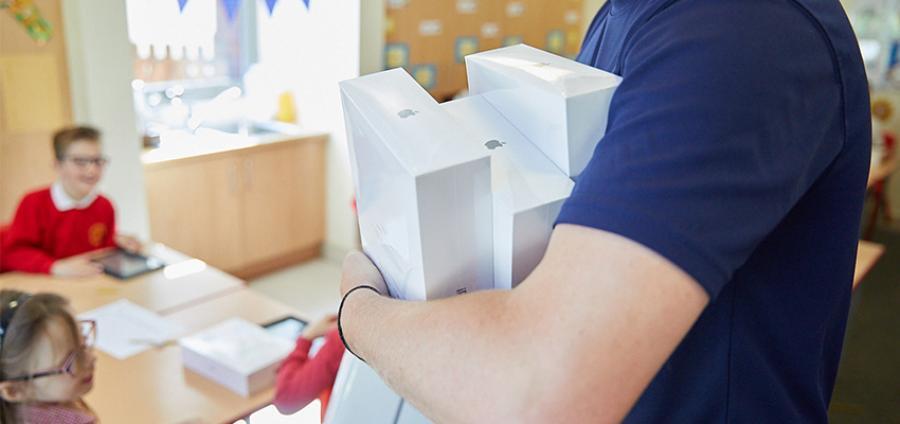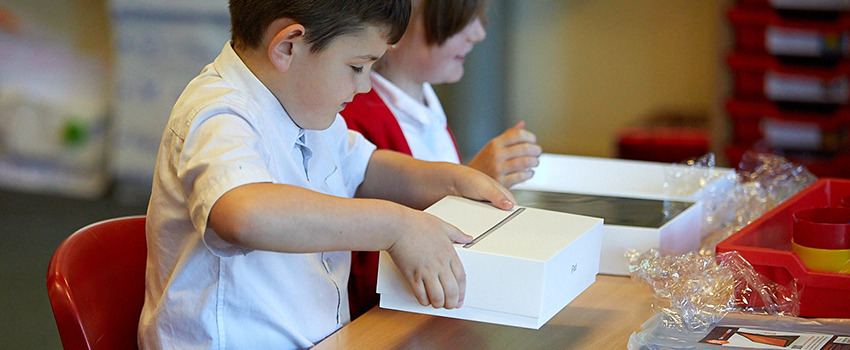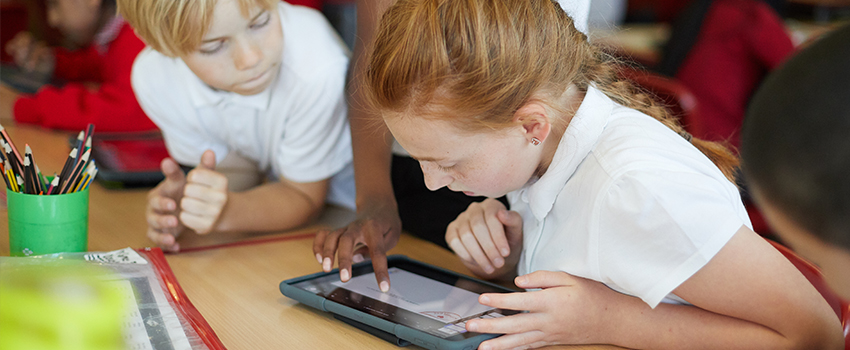
iPad Deployment Models: What are they?
As educators, the chance of having an iPad as part of our education tool kit is thrilling. Our minds race thinking of all the possibilities: “We could go paperless!” “Imagine not taking any books home to mark!” “There’ll be so many resources at my fingertips!. Technology is most impactful when put into the right hands, whether it’s one set of hands or many. iPad is useful to everyone: a single learner, a table of children, the class teacher or as your computer lab on wheels. Each scenario has its benefits and considerations, but there’s always an optimal way to deploy technology in your school, college or university.
Firstly, think of technology as a resource in your school. It should help you achieve your objectives and enthuse your learners. It’s relatively old-hat thinking technology only belongs in certain lessons. It is ever-present in our daily lives, so why not the classroom? As with any resource in your class, you’ll ponder how best to share it: one each, one between two, sat in the literacy tray for learners to choose if they need it or pooled in the centre of a group’s table for accessibility and choice.
There’s a plethora of options and different solutions that work for teachers and learners alike. Right now we’re talking about worksheets, textbooks, stationery, word mats and modelling resources. We wouldn’t lock these away or get them out for specific lessons, so iPad should always be present and accessible in your classroom. This is where it’s important to think about your iPad Deployment Model before physically placing devices in learners hands. After all, you wouldn’t start a lesson without knowing what resources you have and how you plan to use them. As discussed previously, this is where Planning Essentials, a collaborative, supportive start to your Apple Education journey, can help.
At this point, I’m sure you’ve got questions like: “What is iPad Deployment?” “Are there different kinds?” “What’s the difference to teachers and students?” “Surely a class set for the school is enough?” Don’t worry. You’re in the right place. As an ASE (Apple Solution Expert in Education), this is what KRCS is here for. We know how iPad and Mac are used in Education. We’ve seen classrooms in action and know what works. We’re here to pass on our knowledge to you.

1:1 – One iPad per pupil.
This is an ideal scenario where access to iPad is equal and unlimited. Students feel empowered to make their own choices, whilst taking risks to develop their independence. As a teacher, your iPad will control and monitor student devices through Apple Classroom, which helps with classroom management. On top of this, you can distribute and mark work through Showbie, Seesaw or Apple Schoolwork.
1:1 deployment can enable a digital workflow in your classroom. Work can be set discreetly by pushing out differentiated tasks to a specific array of students, or if you have a teacher-guided group, devices can be locked or sent to designated apps, without disrupting the rest of the class.Lessons in any part of the curriculum can be delivered, completed and assessed digitally which is a huge value-add to any school in terms of time and cost spent. No more stress over misplacing a book or printer toner running out.
As each iPad is assigned to one child, it’s a breeze to identify who’s on-task and who isn’t through Apple Classroom. Children can explore their ideas without being concerned with criticism or expectation of those around them. Teachers can easily identify digitally created work and respond easily via Seesaw or Showbie with a written or voice recorded comment, saving on teacher workload. I’ve visited Apple Distinguished Schools where teachers only take home their iPad to mark work. My jaw hit the floor when I first heard that; I’m sure yours just did as well if it’s the first time you’ve heard of that concept.

1:2 – An iPad between two pupils.
Where 1:1 isn’t presently possible, the next step is an iPad between two with a teacher device at the helm. Apple Classroom is still in full swing in a 1:2 deployment model although it’s not as personal to each child. Instead, children might have a numbered or coloured iPad assigned to them and their partner.From a teacher’s perspective, there are plenty of positives: you can still control and monitor student devices and guide them to apps or websites.
Discreetly handing out work via Showbie, Seesaw or Apple Schoolwork is still a great plus as long as the children sharing the iPad are of the same ability. Children take turns creating and submitting work digitally. You’ll need to plan accordingly for this but it’s nothing a teacher isn’t used to when running a flip-flop or carousel lesson.
Regardless of what deployment model you opt for, iPad is a digital creation tool giving curriculum access to everyone, comparable to a dictionary, word mat or maths resource tray. iPad deployment will come up as a topic of conversation in your Planning Essentials meeting. You can read more about Planning Essentials and what’s involved here.
Wherever and however you want to deploy iPad, KRCS are here you for you. Just give the education team a call or email us and we’ll get you started with your iPad deployment.
By Phil Sparrow, an Education Development Manager at KRCS. Follow Phil on Twitter.
Follow us on Twitter
Email us at education@krcs.co.uk
Give us a call on 0115 985 1797
 12 months interest free on any Mac over £1,000.
12 months interest free on any Mac over £1,000.
No Comments yet. be the first to comment.